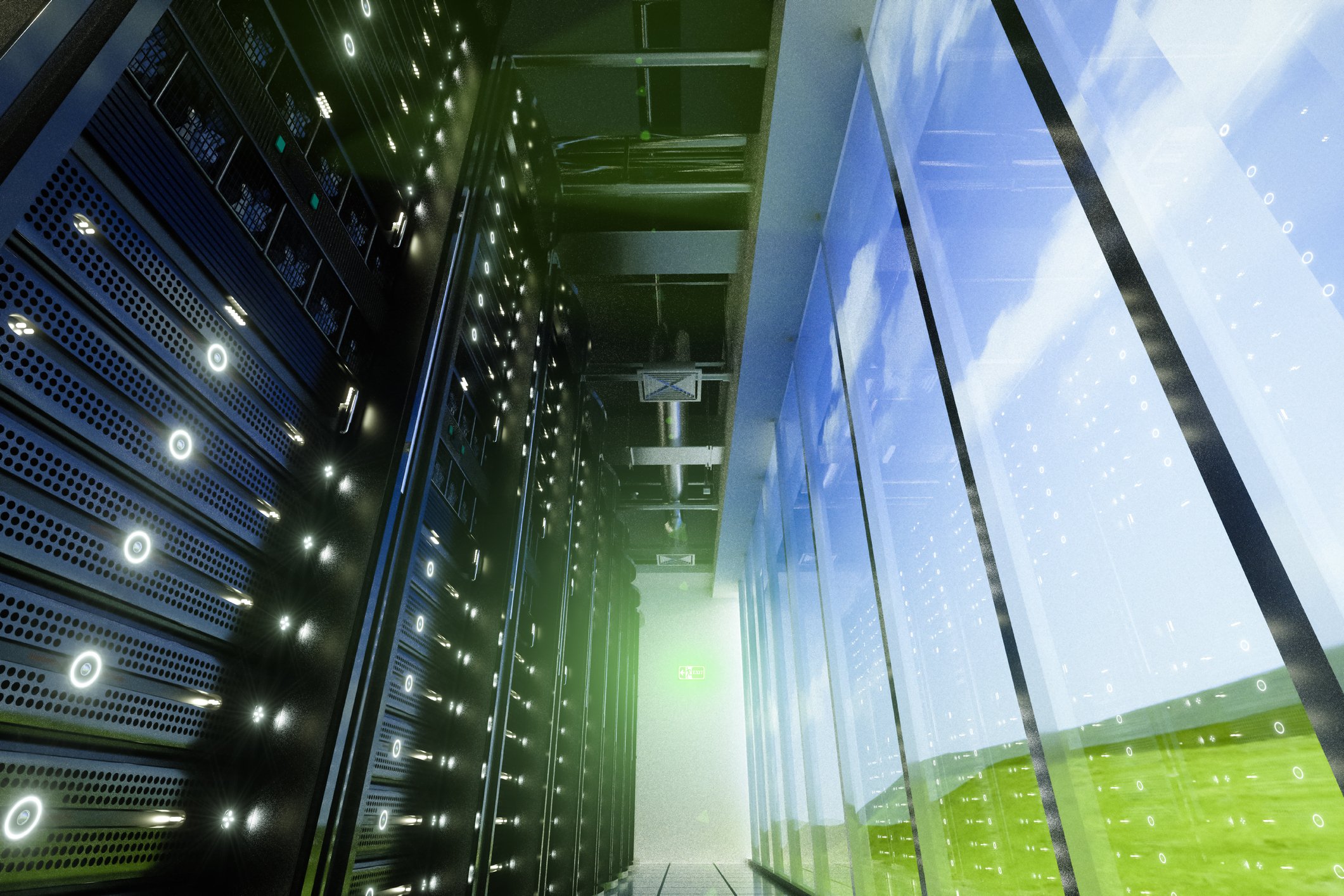In the era of artificial intelligence, data centers have become the heart of innovation. AI training and inference require immense computing power, resulting in skyrocketing electricity demand. Without careful planning, this surge could overwhelm power grids and increase carbon emissions. That is where green energy data centers come into play. Powered by renewable energy, equipped with energy-efficient designs, and supported by sustainable practices, green energy data centers offer a viable blueprint for a high-tech, eco-friendly future.
Why AI Drives Growing Energy Consumption
The recent AI boom, especially in deep learning and large language models, requires significant hardware capacity. Training one of these AI models can use as much power as an entire town. Analysts predict that data center electricity use will rise sharply over the next five to ten years as AI expands into new domains like healthcare, logistics, entertainment, and finance. Some estimates suggest that by 2030, data centers could account for up to 10–12 percent of global electricity consumption.
This is especially concerning for countries that already struggle to balance power demand. Utilities in many places cannot simply produce more electricity overnight. Even where new power plants are built, integrating them into the grid requires long permitting processes, construction, and commissioning timelines. AI companies must plan carefully or risk outages and regulatory pushback.
The Role of Green Energy Data Centers
This is where green energy data centers can make a real difference. By co-locating data centers next to renewable power sources like solar, wind, and hydropower, operators bypass congested grids and reduce carbon emissions. Some companies are investing directly in on-site renewables. They install massive solar farms, wind turbines, and battery systems that generate and store electricity for the data center. Others enter long-term power-purchase agreements with renewable energy providers to ensure their consumption is covered by green power.
Green energy data centers also embrace energy-efficiency strategies that lower total consumption. Modern data halls feature hot-aisle containment to reduce cooling losses and use AI-based systems to optimize cooling and airflow. Some operators employ liquid immersion cooling, submerging servers in non-conductive fluid to absorb heat directly. These techniques reduce the amount of power wasted on mechanical cooling, further shrinking the data center’s footprint.
Addressing Energy and Cooling Demands
Power consumption is only one side of the equation. AI workloads also produce intense heat, and cooling consumes a large proportion of total energy. Traditional data centers relied heavily on water-intensive evaporative cooling, which created sustainability issues in water-stressed regions. Green energy data centers are exploring closed-loop water systems and air-side economizers that use outside air for cooling.
In northern Europe, for example, companies have built green energy data centers that leverage the region’s cold climate. They draw in cold ambient air or water from local lakes and fjords, virtually eliminating energy-hungry chillers. This free cooling strategy not only cuts power usage but also greatly reduces water consumption. Elsewhere, data center operators incorporate AI into cooling management, continually adjusting fans and pumps to minimize energy draw.
Financial and Community Implications
The shift toward green energy data centers also carries financial implications. Deploying renewables requires upfront capital spending, but operators stand to benefit from lower long-term energy costs as renewable prices continue to drop. Moreover, companies that embrace sustainability improve their public image and often qualify for green financing options like sustainability-linked loans.
Data center builders must also work with local communities to ensure these projects deliver shared value. Beyond providing tax revenues and local jobs, green energy data centers can support nearby communities by sharing excess heat for district heating or by co-developing renewable power projects that also supply homes and businesses. Partnerships with local governments and utility companies can make these facilities assets rather than burdens.
Long-Term Outlook for Green Energy Data Centers
The future looks bright for green energy data centers as AI continues to grow. Countries are already revising energy policies to encourage investments in green data center infrastructure. Some governments now require new data center projects to meet strict energy-efficiency standards or obtain a portion of their power from renewable sources. This is especially evident in Europe, where the European Green Deal sets aggressive sustainability goals for all major industries.
Beyond regulation, major companies such as Microsoft, Google, and Amazon Web Services have adopted corporate pledges to power all their data centers with 100 percent renewable electricity by 2030. These commitments drive rapid deployment of green energy solutions across data center operations. They also encourage innovation in energy-storage technology and AI-driven resource optimization.
The emergence of green energy data centers is also opening doors for specialized technology providers. Companies that design immersion cooling systems, renewable energy microgrids, and data center automation software are seeing new business opportunities. Even traditional power utilities are diversifying into data center partnerships as they recognize the stable demand for clean electricity that AI workloads will require.
Conclusion
As AI becomes a core part of the global economy, the energy footprint of data centers cannot be ignored. Green energy data centers provide a proven path forward. Powered by renewables, employing smart cooling, and integrated into local grids, these facilities support surging AI workloads while keeping emissions and resource consumption under control.
With strong commitments from tech giants, supportive policies from governments, and rapid advances in energy-efficient hardware and design, the future of green energy data centers looks promising. They will play a central role in ensuring that the AI revolution is not only productive and profitable but also environmentally sustainable and socially responsible.
Read More






 Thursday, 20-11-25
Thursday, 20-11-25







